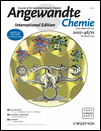The Triplet State of Indigo†
Financial support from FEDER and FCT (project POCI/QUI/55672/2004) are acknowledged. C.S. acknowledges FCT for a grant SFRH/BPD/13297/2003. Dr. S. Navaratnam, Dr. R. Edge (FRRF, Daresbury Laboratory, UK), and J. Pina are acknowledged for their excellent technical support in the pulse radiolysis experiments. MnTPP was a kind gift from Dr. Marta Pineiro.
Graphical Abstract
The elusive triplet state of indigo (see picture) has been fully characterized by energy-transfer pulse radiolysis and photoacoustic calorimetry. The triplet energy is (1.04±0.10) eV and the singlet-to-triplet intersystem crossing yield in solution is ϕISC=0.0066. Inefficient intersystem crossing, low triplet energy, and fast internal conversion of the singlet state likely contribute to the high stability of indigo.





